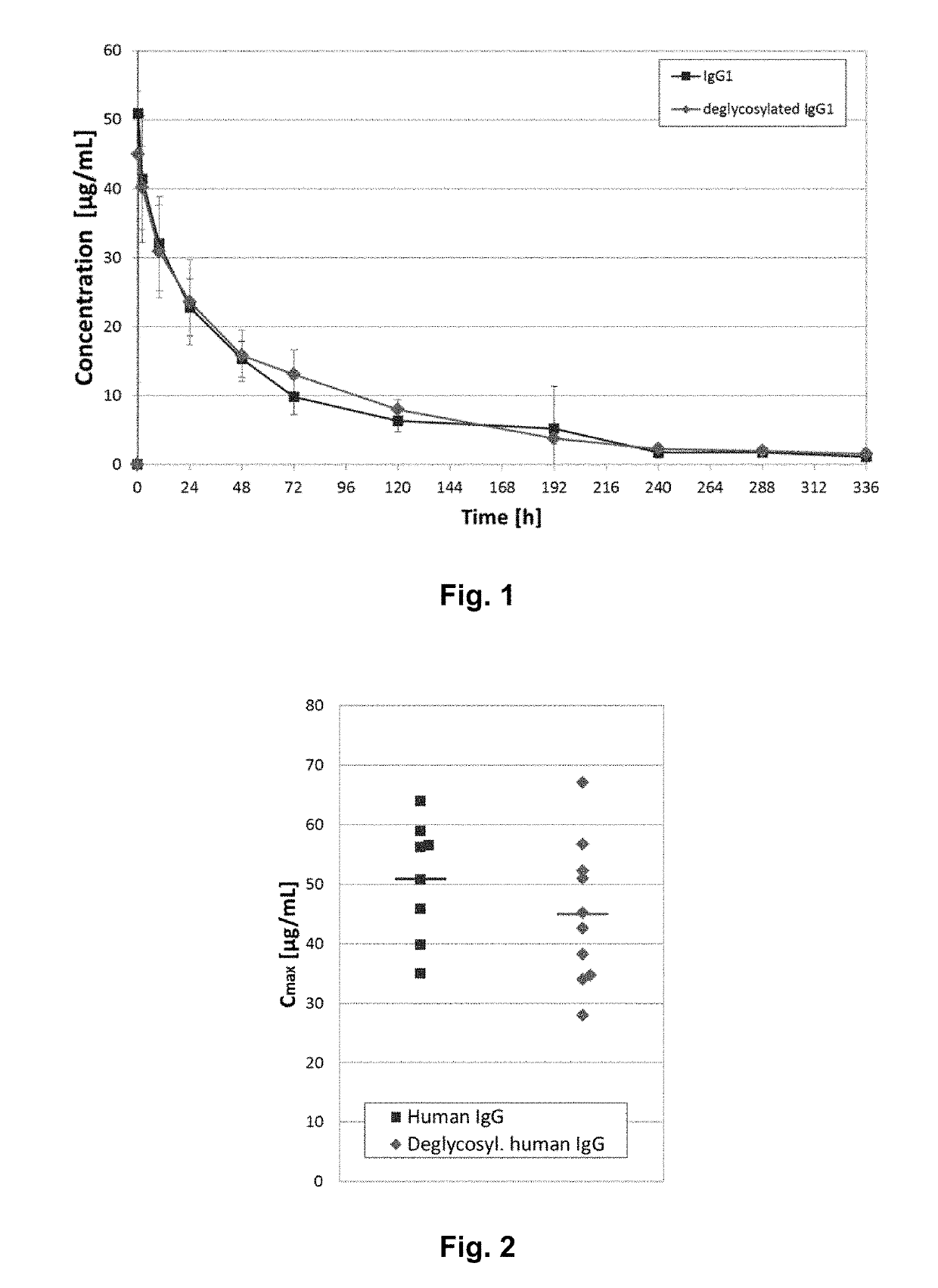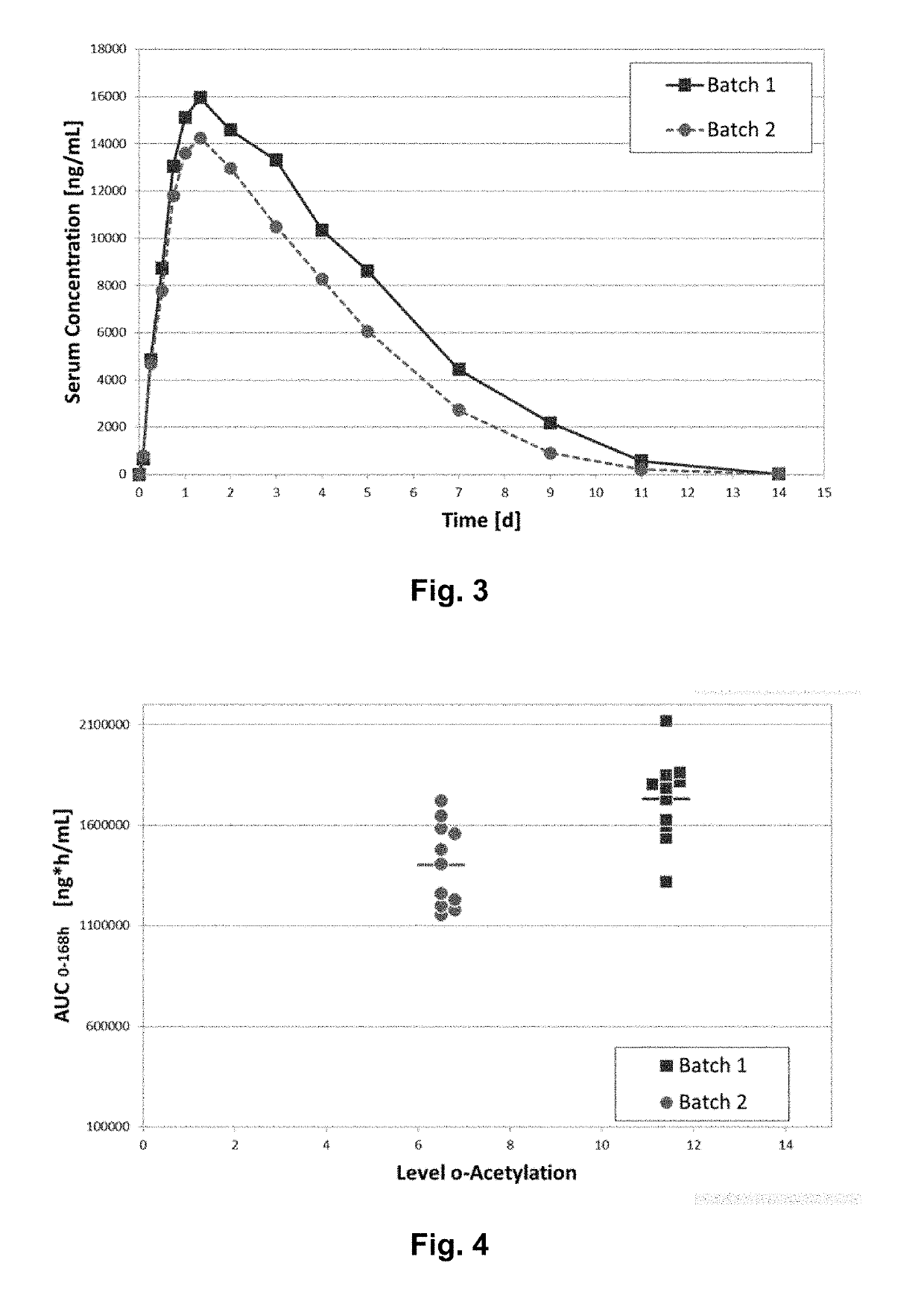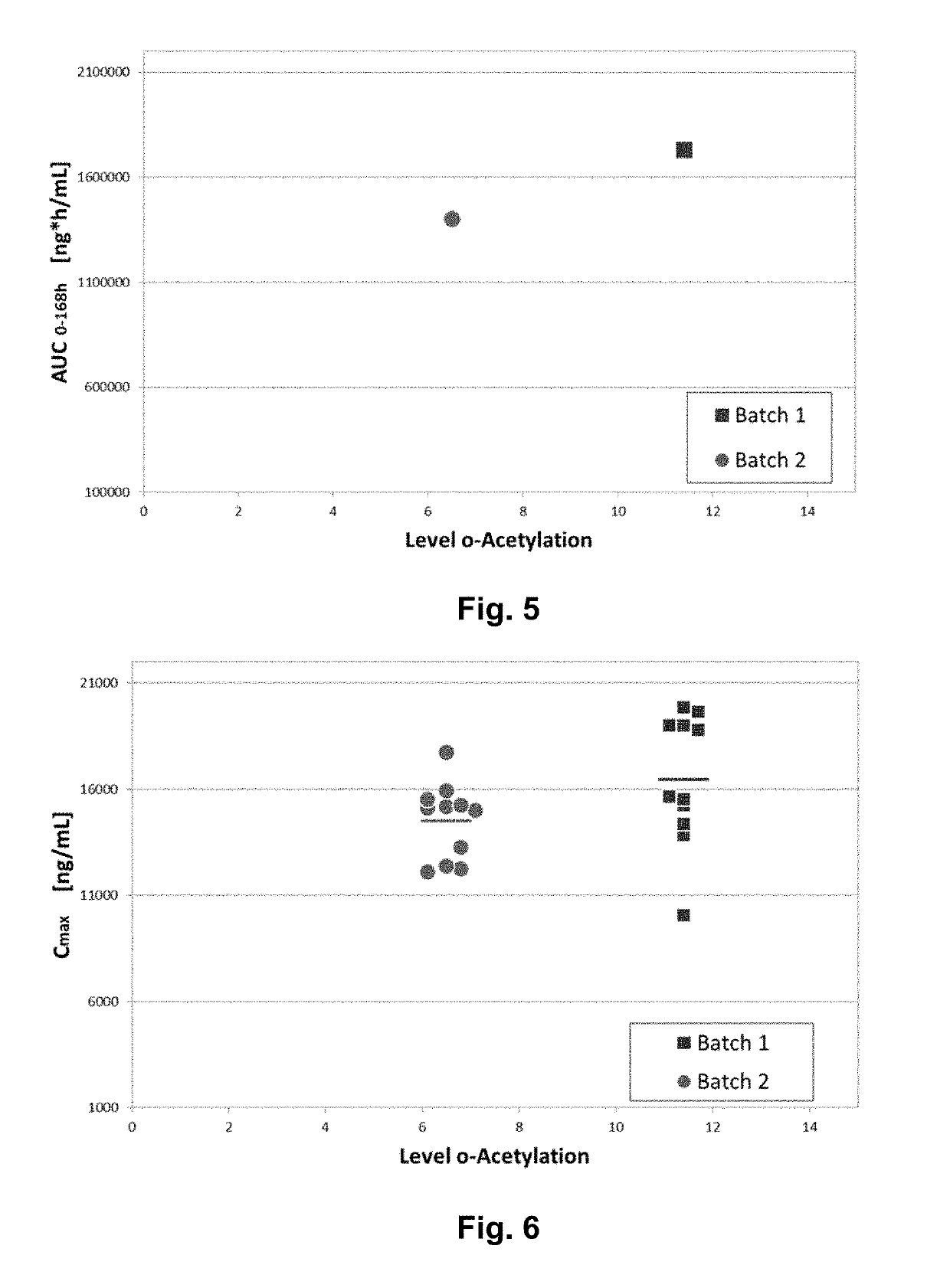Glycoprotein with reduced acetylation rate of sialic acid residues
- Summary
- Abstract
- Description
- Claims
- Application Information
AI Technical Summary
Benefits of technology
Problems solved by technology
Method used
Image
Examples
example 2
ES IN BIOAVAILABILITY OF DIFFERENT BATCHES OF A GLYCOPROTEIN BIOLOGIC WITH DIFFERENT SIALIC ACID O-ACETYLATION RATES
[0190]It was tested whether two batches of the CTLA-FC fusion protein abatacept (Orencia®) which have different levels of O-acetylation would differ in their exposure / bioavailability upon single, s.c. administration. The respective di-O-acetylation rates were 11.4% for batch No 1 and 6.5% for batch No 2. Tri-O-acetylated sialic acids were not observed.
TABLE 2Study Design, Single Dose PK Study in rabbitsDosevolumeNNo.Treatment[mg / kg][mL / kg]scheduleroute(f)1Orencia ®50.62singles.c.11Batch 1injection(t = 0)2Orencia ®50.62singles.c.11Batch 2injection(t = 0)
[0191]Dense serum samples were taken up to 14 days following treatment, to allow a close monitoring of serum levels, stored frozen and quantified for abatacept concentrations using conventional ELISA.
[0192]FIG. 3 shows the time course of mean serum levels (n=11 / group) upon single s.c. injection of two Orencia® batches in...
example 3
REDUCED SIALIC ACID O-ACETYLATION RATES ON EXPOSURE / BIOAVAILABILITY
[0194]In this example the causal relationship between O-acetylation rates and exposure / bioavailability of a selected glycoprotein biologic are investigated.
[0195]To this end, a sufficient amount of a single batch of abatacept (Orencia®) was purchased, reconstituted and desalted into a 10 mM Sodium Phosphate / 1 mM MgCl2 buffer at pH 7. The batch was split into two halves. The first half was incubated with sialate-9-O-acetylesterase (Applied BioTech, Angewandte Biotechnologie GmbH) for two hours at 37° C. The second half was treated the same way, yet no enzyme was added. Subsequently the esterase was removed by affinity chromatography. The characteristics of the two resulting materials is summarized in Table 3 and FIG. 8. Table 4 summarizes the study design for the comparison the these two materials.
TABLE 3Characterization of de-O-acetylated and sham-treated Orencia ®:Sham-treatedDe-O-acetylatedMethodOrencia ®OrenciaPot...
example 4
EFFICACY OF AN ESA WITH REDUCED LEVEL O-ACETYLATED SIALIC ACIDS
[0198]As typical example of erythropoiesis stimulating agents, Aranesp® (darbepoetin alfa) was selected. Aranesp® is highly sialylated and carries O-acetylated sialic acids as well. Rats were chosen as model due to the excellent predictivity of the results obtained for humans. As injection route, subcutaneous injection was chosen again, representing a typical route for clinical praxis. The dose range was selected to follow clinical praxis, as well.
[0199]For the preparation of de-O-acetylated Aranesp® to be tested in vivo Aranesp® was used. In short, several syringes were pooled to provide about 1 mg darpepoetin starting material for which the buffer was exchanged by dialysis into 50 mM Na-phosphate buffer pH 7.6 containing 140 mM NaCl, before incubation with 1 ml=which was treated with 1 U of sialate 9-O-acetylesterase for 20 h at 37° C.
[0200]After incubation the enzyme was removed by affinity chromatography on an anti-E...
PUM
| Property | Measurement | Unit |
|---|---|---|
| Fraction | aaaaa | aaaaa |
| Fraction | aaaaa | aaaaa |
| Temperature | aaaaa | aaaaa |
Abstract
Description
Claims
Application Information
 Login to View More
Login to View More - Generate Ideas
- Intellectual Property
- Life Sciences
- Materials
- Tech Scout
- Unparalleled Data Quality
- Higher Quality Content
- 60% Fewer Hallucinations
Browse by: Latest US Patents, China's latest patents, Technical Efficacy Thesaurus, Application Domain, Technology Topic, Popular Technical Reports.
© 2025 PatSnap. All rights reserved.Legal|Privacy policy|Modern Slavery Act Transparency Statement|Sitemap|About US| Contact US: help@patsnap.com



